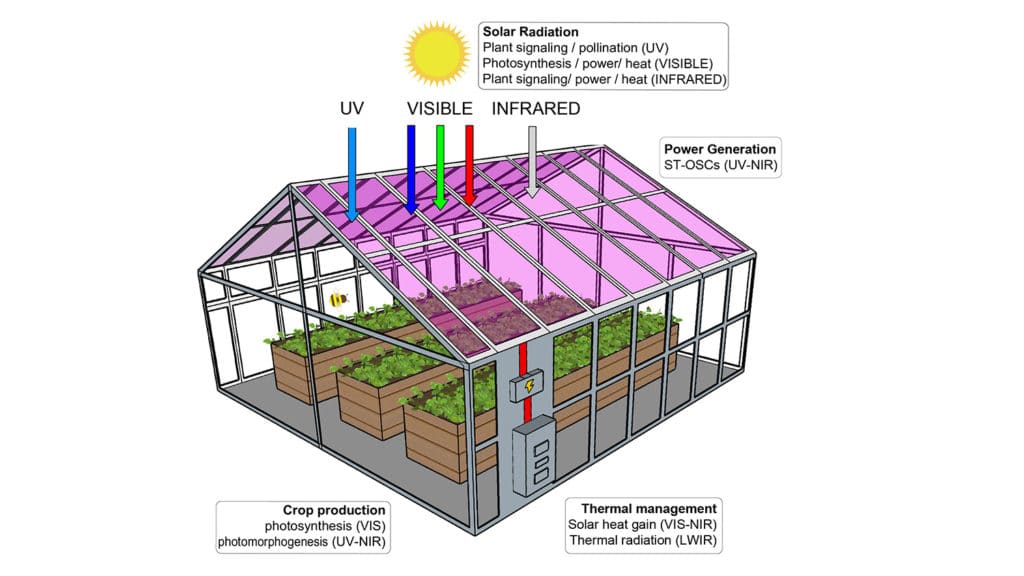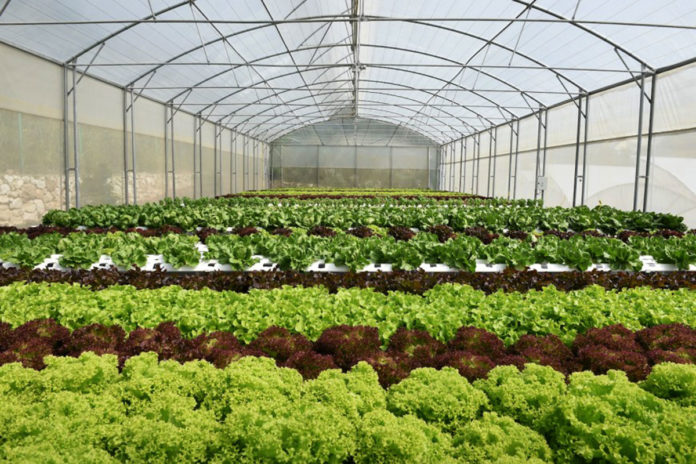Organic solar cells are emerging as viable renewable energy systems, thanks to ever-increasing advantages. They are more flexible than other technologies, can be transparent or semi-transparent, and the wavelengths of light they harvest can be adjusted. In theory, they, therefore, seem ideal for being installed into windows and greenhouses. But would they deprive plants of vital sunlight?
To find out, researchers at North Carolina State University grew lettuce under various wavelengths of light. They found that lettuce can be grown in greenhouses that filter out wavelengths of light used to generate solar power, demonstrating the feasibility of using see-through solar panels in greenhouses to generate electricity.
Because plants do not use all wavelengths of light for photosynthesis, researchers have explored the idea of creating semi-transparent organic solar cells (or ST-OSCs) rather than the more traditional silicon-based type used in large solar power farms. They primarily absorb wavelengths of light that plants don’t rely on and incorporating those solar cells into greenhouses.

Depending on the design of the greenhouse and where it is located, solar cells could make many greenhouses energy neutral – or even allow them to generate more power than they use. But, until now, it wasn’t clear how these semi-transparent solar panels might affect greenhouse crops.
To solve this issue, the team grew crops of red leaf lettuce in greenhouse chambers for 30 days – from seed to full maturity. The different groups were all exposed to the same growing conditions, such as temperature and water to fertilizer and CO2 concentration – except for the light.
The lettuce was grown in 4 groups. While the control group was exposed to the full spectrum of white light, the three remaining experimental groups were exposed to light through different types of filters that absorbed wavelengths of light equivalent to what different types of semi-transparent solar cells would absorb. This manipulated the ratio of blue light to red light in all three filters to see how it affected plant growth.
Then the researchers paid close attention to visible characteristics that are important to growers, grocers, and consumers, such as leaf number, leaf size, and how much the lettuces weighed. They also monitored several markers of plant health, including how much CO2 they absorbed and the levels of antioxidants they contained. Interestingly, the plants grew the same way regardless of the type of light they received.
“Not only did we find no meaningful difference between the control group and the experimental groups, but we also didn’t find any significant difference between the different filters,” says Brendan O’Connor, an associate professor of mechanical and aerospace engineering at NC State.
The next step towards solar-powered greenhouses will be to test the technology with plants and crops other than lettuce – tomatoes are apparently the next step – but these early results show promise in terms of plant health and growth.
